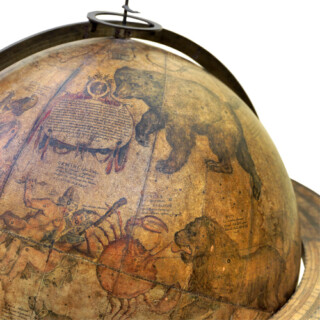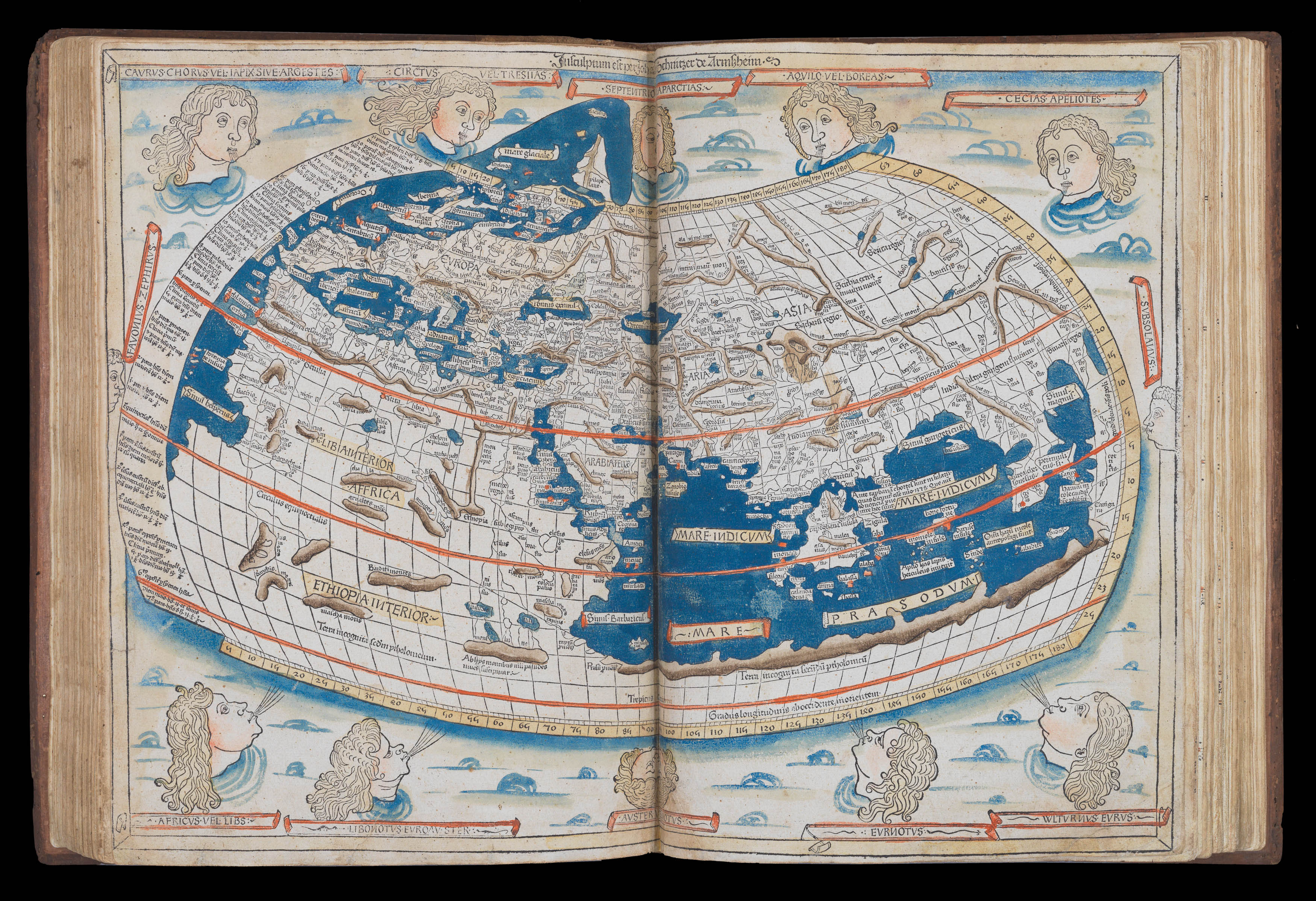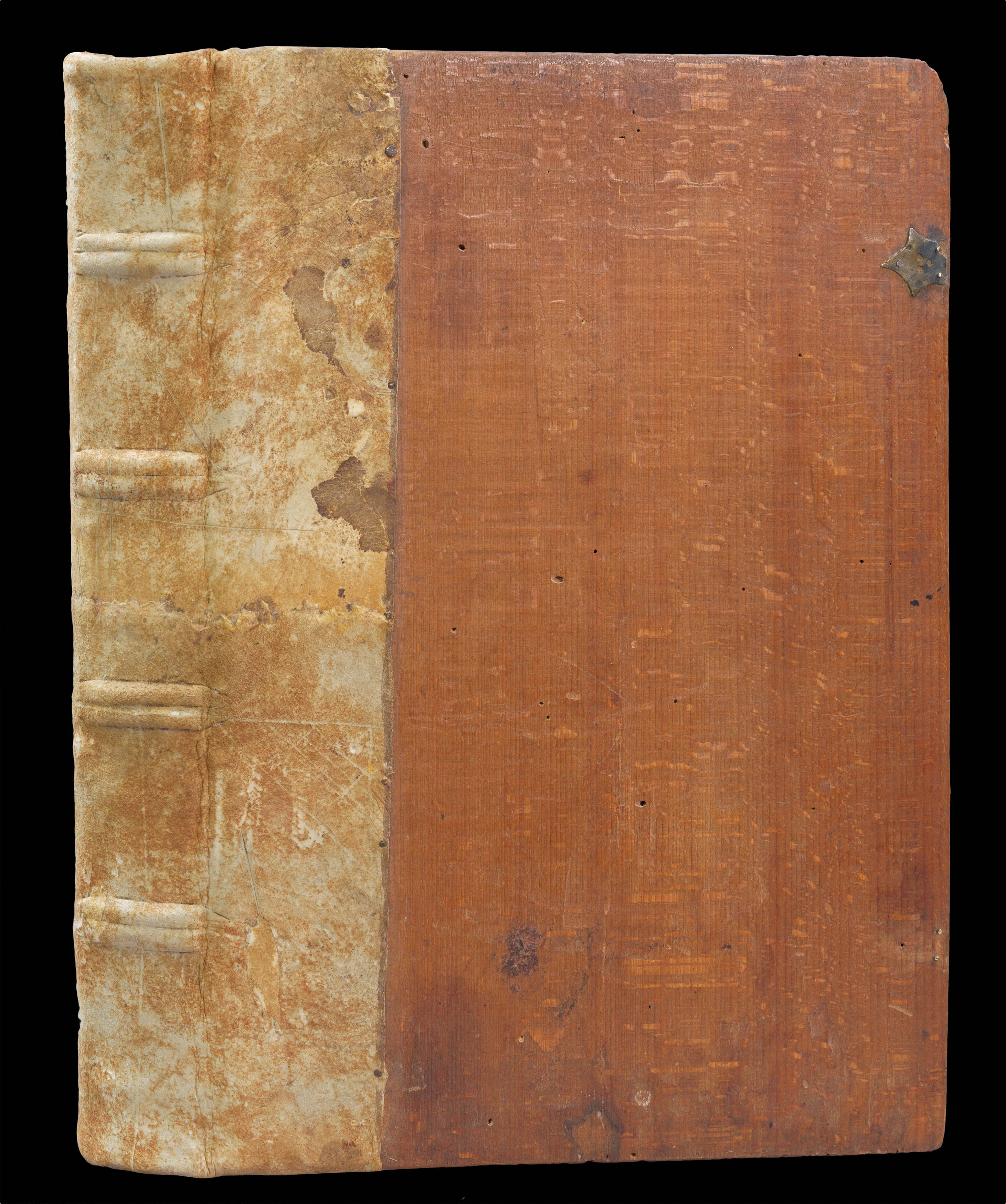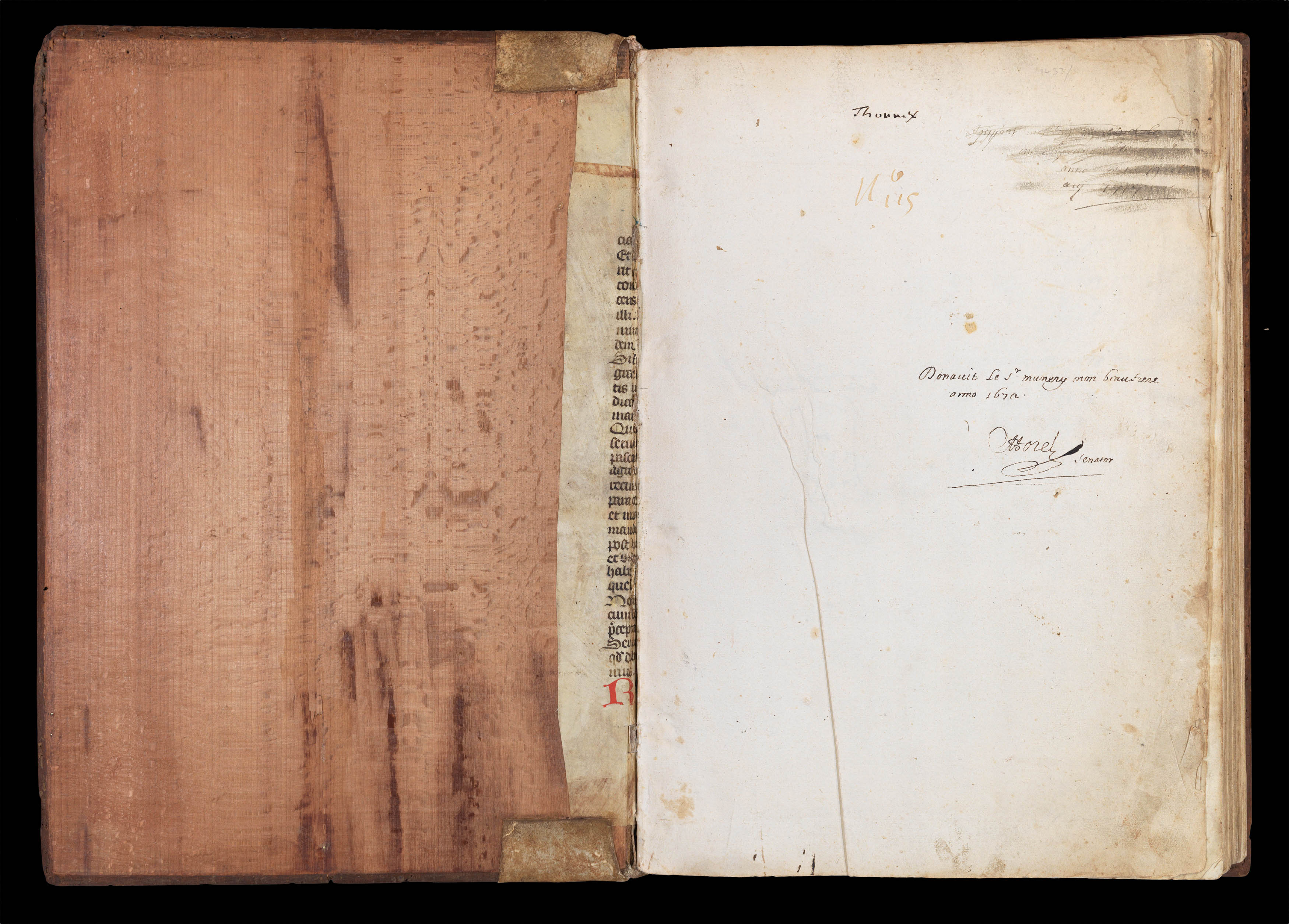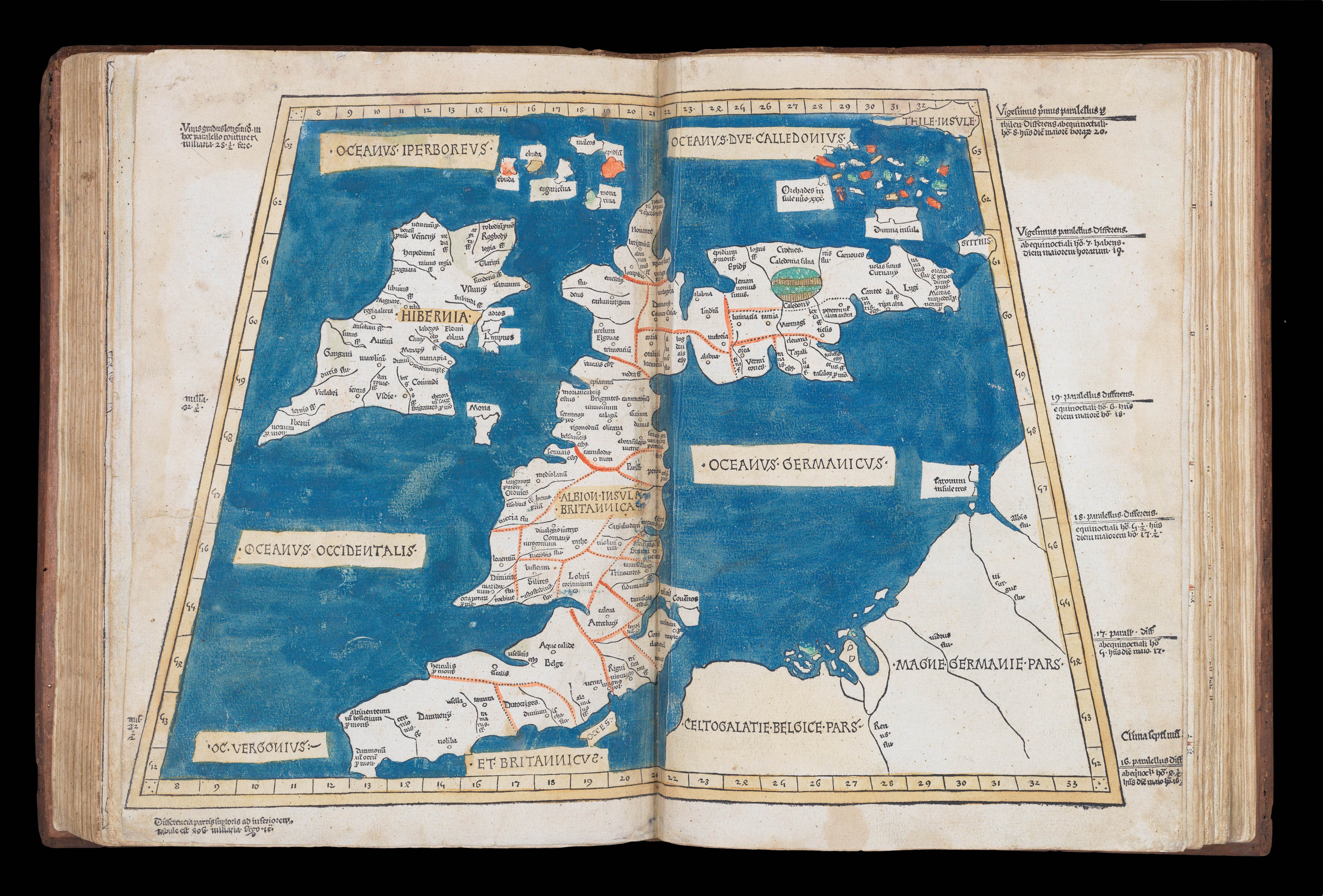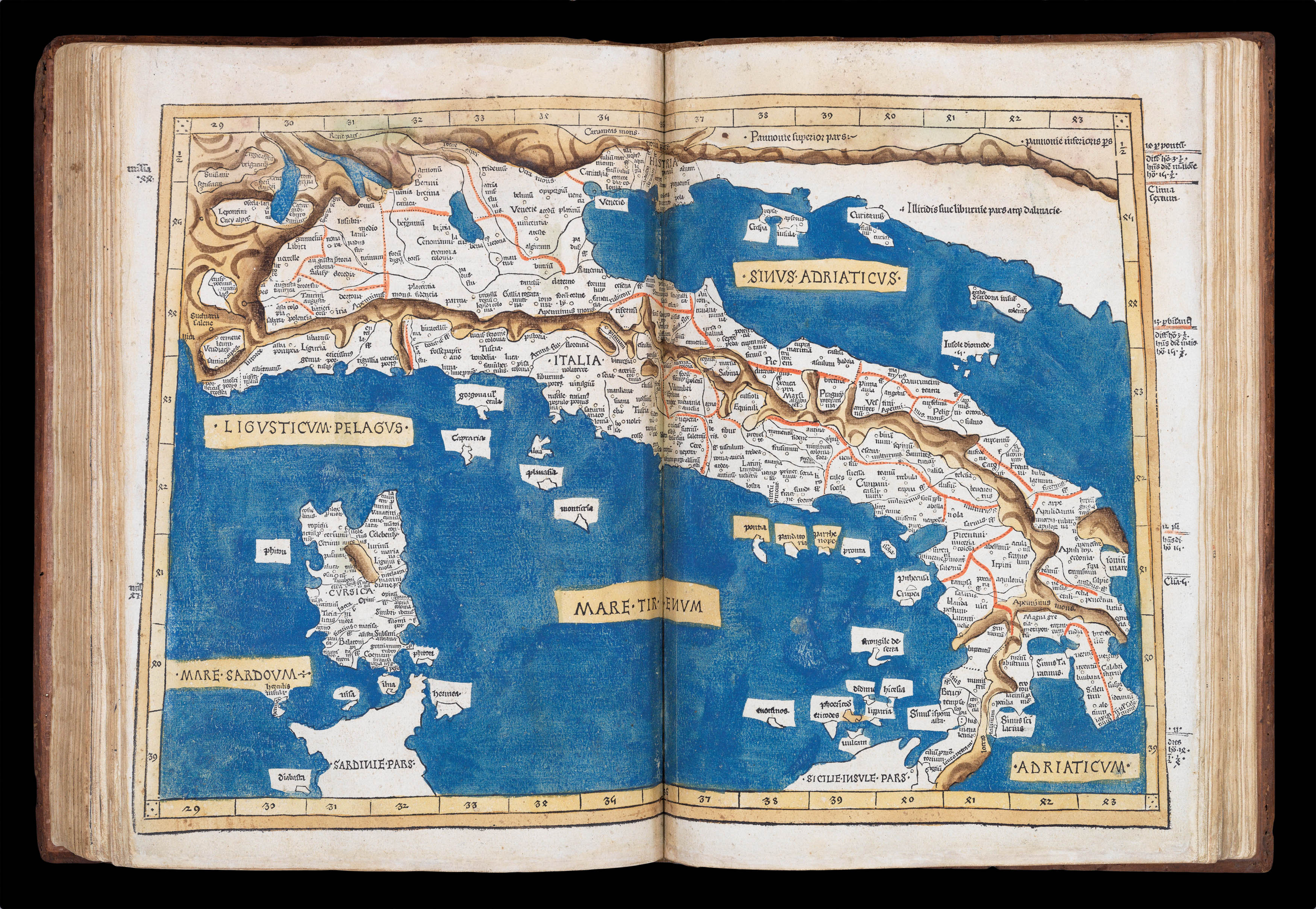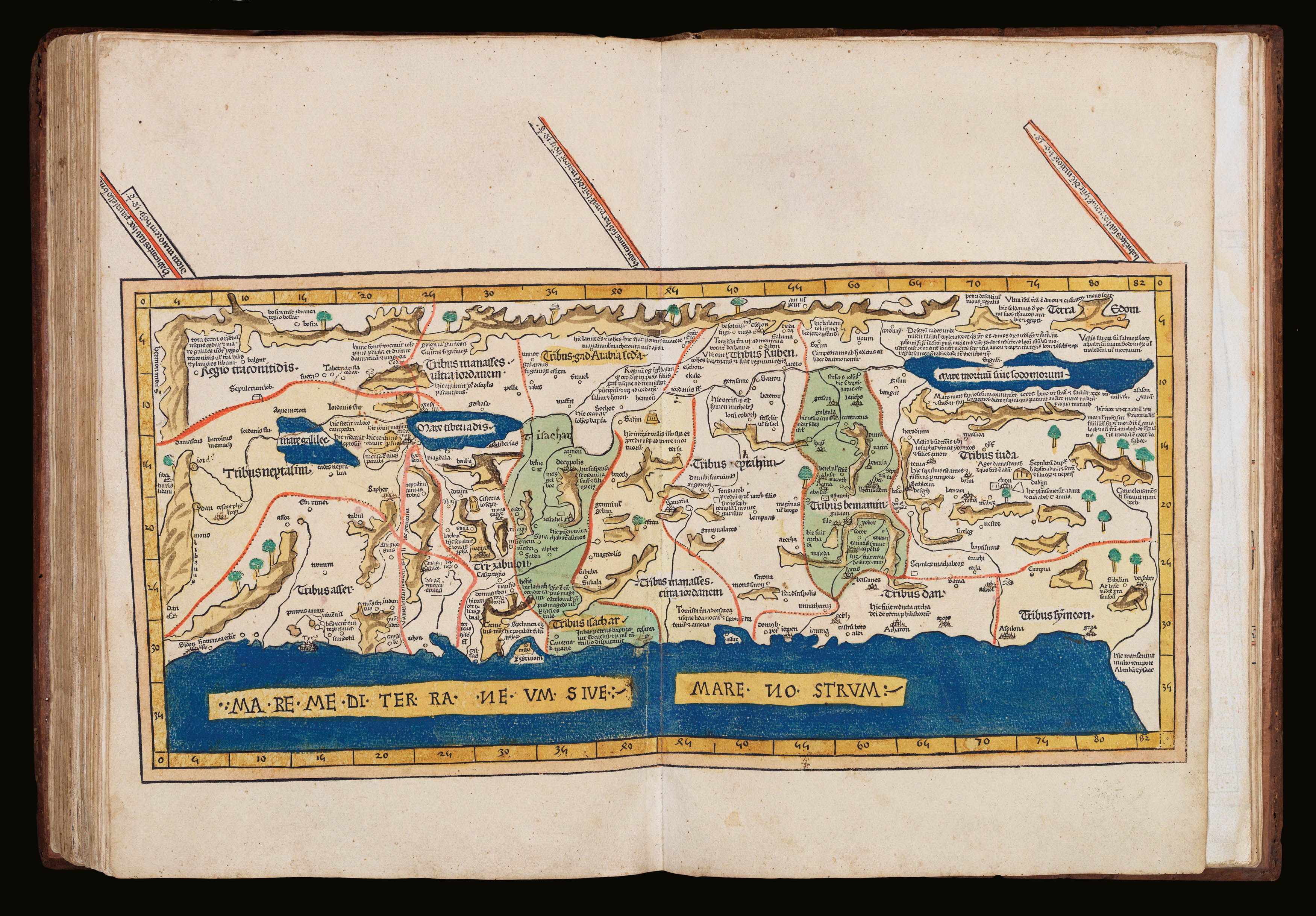The world Columbus knew – Ptolemy’s Second Projection, and the first map signed by its author
Cosmographia.
Ulm,
Lienhart Holle,
16 July 1482.
Folio (428 by 310mm), 102 leaves, double- column, 44 lines and headline, Gothic letter, 32 double-page woodcut maps with fine original hand-colour, 4 woodcut diagrams in the text, 2 large illuminated historiated initials, one showing Donnus Nicolaus presenting his book to Pope Paul II, the other of Ptolemy, 159 other woodcut initials coloured in red, green and ochre, paragraph marks and initial-strokes supplied in ochre, tear to d6, and repaired tear to the map 'Tertia Africa', some dampstaining and discolouration throughout, including spotting affecting the final three maps, skilful reinforcement to weakened lower page corners on maps, single leaf free endpaper bearing ownership inscription; re- cased in contemporary doeskin over clasped oak boards, joints reinforced with vellum waste, remnants of one clasp remaining.
[Bound after]: 'Registrum' from Johannes Reger's 1486 edition of Ptolemy's "Cosmographia", decorated with 17 5- and 6-line manuscript initials in red and blue, 30 leaves bound in 6s (not 8s as is usually the case); 9 leaves in the 'registrum' uncut, tear to d6.
Collation: [Registrum]: a-d(6), e(5); [Cosmographia]: [i], a10, b-g8, h11, 32 maps.
Watermark: Late fifteenth century Italian watermark of a flower with 7 petals throughout, with the exception of the front endpaper/'initial blank', which bears the watermark of an upper case letter 'B' on a crowned shield. These were used by the le Bé family of Troyes, in this case 'Ioane le Bé'. Three members of the Troyenne papermaking le Bé family bore the Christian name 'Jean': Jean I started his business in 1406. Jean II owned two paper mills around the 1470s, and Jean III lived in Troye in the first half of the 16th century. The le Bé family were accredited papermaker for the Université de Paris from 1520 onwards.
[Bound after]: 'Registrum' from Johannes Reger's 1486 edition of Ptolemy's "Cosmographia", decorated with 17 5- and 6-line manuscript initials in red and blue, 30 leaves bound in 6s (not 8s as is usually the case); 9 leaves in the 'registrum' uncut, tear to d6.
Collation: [Registrum]: a-d(6), e(5); [Cosmographia]: [i], a10, b-g8, h11, 32 maps.
Watermark: Late fifteenth century Italian watermark of a flower with 7 petals throughout, with the exception of the front endpaper/'initial blank', which bears the watermark of an upper case letter 'B' on a crowned shield. These were used by the le Bé family of Troyes, in this case 'Ioane le Bé'. Three members of the Troyenne papermaking le Bé family bore the Christian name 'Jean': Jean I started his business in 1406. Jean II owned two paper mills around the 1470s, and Jean III lived in Troye in the first half of the 16th century. The le Bé family were accredited papermaker for the Université de Paris from 1520 onwards.
17674
notes:
A fine example in a contemporary binding, here bound with Johannes
Reger's 'Registrum' made for his 1486 edition of the work.
The text of Claudius Ptolemy's (c100-170CE) 'Cosmographia' was translated into Latin from the original Greek by Jacobus Angelus (c1360-1411) and was first published, in Renaissance times, at Vicenza
(1475), Bologna (1477) and Rome (1478). The sumptuous edition
published at Ulm in 1482, however, far surpassed all earlier effo...
Reger's 'Registrum' made for his 1486 edition of the work.
The text of Claudius Ptolemy's (c100-170CE) 'Cosmographia' was translated into Latin from the original Greek by Jacobus Angelus (c1360-1411) and was first published, in Renaissance times, at Vicenza
(1475), Bologna (1477) and Rome (1478). The sumptuous edition
published at Ulm in 1482, however, far surpassed all earlier effo...
bibliography:
Campbell, 179-210; Schreiber, 5032; Skelton, bibliographical note prefixed to the facsimile of the 1482 Ulm Ptolemy; Troley, T.2:636.
provenance:
Provenance:
1. inscribed on front free endpaper "Donnait Le Sr. munery mon beaufrere [given by my brother-in-law Sr. Munery] anno 1672 Morel Senator".
2. inscribed on d2 "Josephus Mattheus de Morel 1718, Franciseii de Morel".
This is probably André de Morel (Maurel) (1603-1690), Senator in the Parlement de Provence. Morel's family began their social elevation under Charles d'Anjou (1446-1481) who was also King of Naples and Earl of Provence. It is said that the King put Pierre de Morel in his will and, at his death in 1481, he inherited a part of his library. The family served the French Crown as advisors and officers during wars in Northern Italy and Spain until Henri IV of France. Then in the late 1620's André de Maurel became a prominent magistrate and member of Parliament of Provence. He ruled his office for 67 years and was known as Senator Morel. His second son, Joseph de Maurel (1658-1717) was Bishop of Saint Paul-Trois-Chatêaux between Aix and Valence. His heir and nephew, François de Maurel, Captain in the 'Regiment de Toulouse' in 1719, inherited his belongings after his death.
1. inscribed on front free endpaper "Donnait Le Sr. munery mon beaufrere [given by my brother-in-law Sr. Munery] anno 1672 Morel Senator".
2. inscribed on d2 "Josephus Mattheus de Morel 1718, Franciseii de Morel".
This is probably André de Morel (Maurel) (1603-1690), Senator in the Parlement de Provence. Morel's family began their social elevation under Charles d'Anjou (1446-1481) who was also King of Naples and Earl of Provence. It is said that the King put Pierre de Morel in his will and, at his death in 1481, he inherited a part of his library. The family served the French Crown as advisors and officers during wars in Northern Italy and Spain until Henri IV of France. Then in the late 1620's André de Maurel became a prominent magistrate and member of Parliament of Provence. He ruled his office for 67 years and was known as Senator Morel. His second son, Joseph de Maurel (1658-1717) was Bishop of Saint Paul-Trois-Chatêaux between Aix and Valence. His heir and nephew, François de Maurel, Captain in the 'Regiment de Toulouse' in 1719, inherited his belongings after his death.






